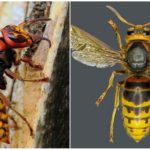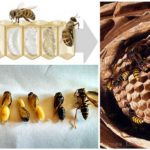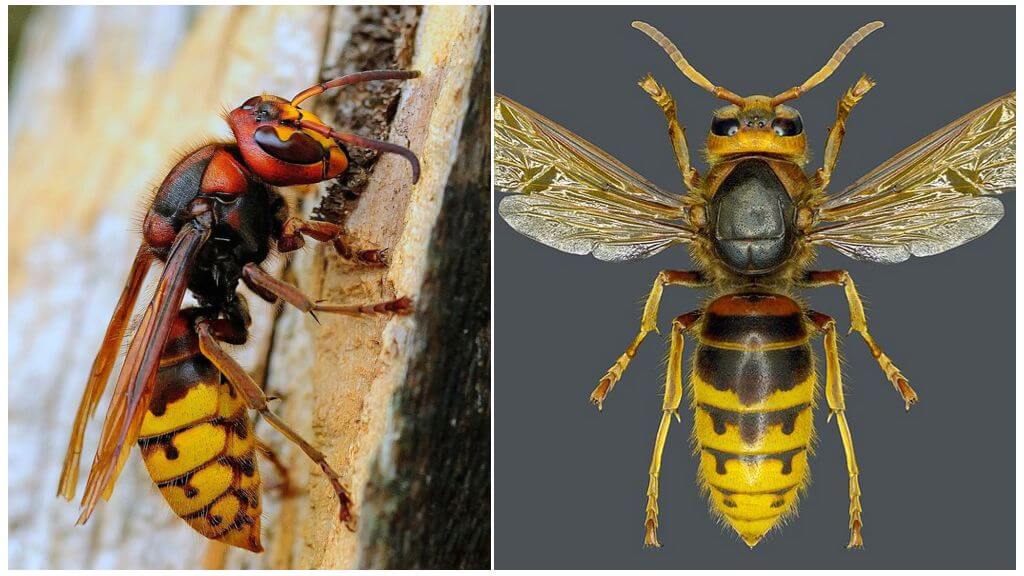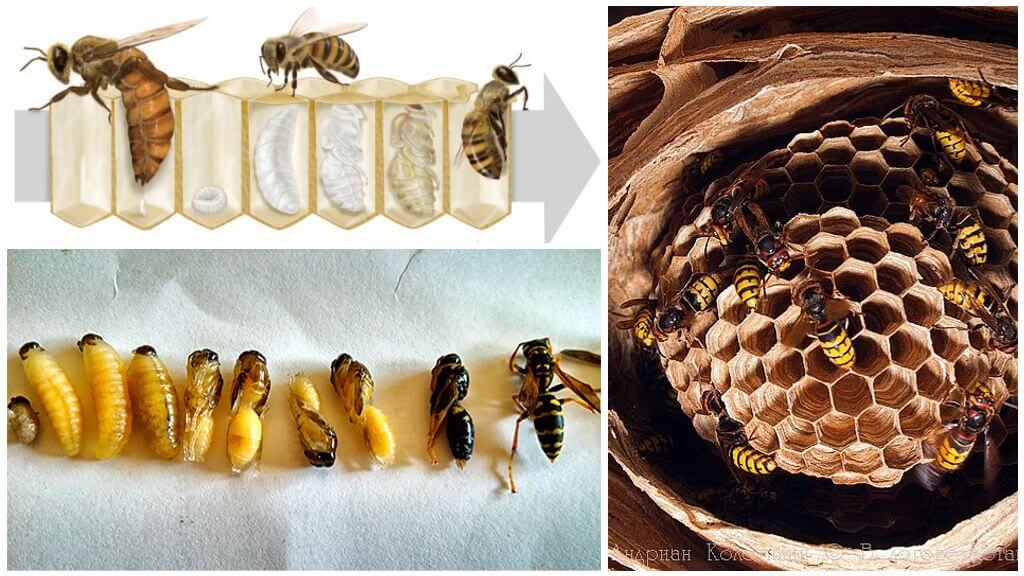European Hornet
- European Hornet
- Hornet breeding
The ordinary hornet is the largest wasp. Translated from Latin, Vespa means wasp. The insect is distributed throughout Europe, lives in the wild, but often settles near the human domain. The bite of the European hornet is painful, causes an allergic reaction, but does not pose a danger to life.
Appearance Description
The common hornet is a huge wasp ranging in size from 2 to 3.5 cm. The length of the uterus varies from 25 cm to 35 cm.Unlike wasps, the hornet has a larger head with a wide crown. In females, the striped abdomen is one segment shorter than in males.
The uterus and workers have a sting - an underdeveloped egg-deposit. When the stinger is calm, the insect is not visible, the insect uses it as an instrument of protection.
On a note!
The sting does not have chipping like that of bees, therefore it can be used repeatedly.
Three pairs of legs, long whiskers on the head, large eyes and a few simple eyes. Striped belly - stripes of black, yellow color alternate. Borders are blurred in contrast to the wasps. Slim waist, transparent wings. Common hornet on the photo below.
Nest
The ordinary hornet is a skilled architect, an experienced builder. Insects make large stacked nests different colors - gray, brown, brown, purple, white, yellow, beige.
European hornet builds nests in abandoned bird nests, hollows of old trees, under branches, on a cliff, under the roof of outbuildings, in attics. The shape of the nest resembles a pear, an oval ball. In length reaches 70 cm, in width - 40 cm.
Interesting!
Insects use wood and bark as a building material. Chew thoroughly, resulting in a sticky mass. After solidification, it becomes similar to paper, so the hornet's nest is often called paper.
Inside there are numerous entrances, exits, a variety of chambers for eggs, larvae, food supplies, rooms for rest, the abode of the uterus.
Nutrition
Adults prefer vegetable food, eat juices, rich in sugar. Insects love:
- ripe apples;
- pears;
- berries;
- plums;
- nectar;
- honey.
Quite often, common hornets attack bee's nests, eat honey stocks. The larvae require protein food, so the adults of the voracious offspring of insects are harvested:
- grasshoppers;
- flies;
- dragonflies;
- spiders;
- butterflies;
- bees;
- Zhukov.
The common hornet enters a mortal combat with prey, paralyzes with poison, then finishes.
Breeding
A fertile female after mating is able to reproduce continuously offspring for life. After mating in early spring, it flies around the territory, looking for a favorable place for arranging the future nest.Builds several honeycombs, lays one egg in each. After a few days, the larvae appear with an excellent appetite.
In 2 weeks, the larvae turn into pupae, from which in a few days young insects are selected independently. The society of ordinary hornets is divided into castes, each member performs its functions. Young fertile females mate with males, equip their nests. Working individuals during the entire warm season are engaged in building a nest, getting food, guarding, caring for the uterus, larvae.
The life of the uterus is about 2 years. Insect winters in the crevices of the tree, under the roof, outbuildings, old hollows. Spring is building a new nest. Working individuals live for about a month, males die 2 weeks after mating.
Hornet bite effects
Despite the threatening appearance, insects do not differ aggressive behavior, people, animals do not attack, if they do not feel threatened. Occasionally flying into a man’s house, an ordinary hornet slowly explores the terrain for an exit. To get rid of it, it is enough to leave the window, window, doors open.
On a note!
Dangerous family of hornets ordinary, if you disturb the nest. All members of society rush to defend, immediately attack the enemy, inflict painful bites. The situation is dangerous the strongest allergic reaction, health problems.
The poison causes irritation, pain, swelling, redness, swelling. However, in most cases, single bites do not cause much harm. To alleviate the condition, it is enough to wipe the affected area with alcohol, rinse with cold water, treat with any antiseptic. Signs of bites go away within a few days.
Severe allergic reaction with nausea, vomiting, fever, weakness, difficulty breathing is possible in the presence of individual intolerance to poison. In this case, it is required to take an antihistamine drug, treat the sore spot with an antiallergic agent, seek help from specialists.









